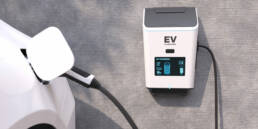Since the dawn of time, humans have been transporting water in order to sustain life. It’s not
always been pretty or easy, and technology has undeniably played a huge part in streamlining
the process for millions of people across the globe.
And yet, we still haven’t got it right.
Astoundingly, 1 in 3 people globally still don’t have access to safe drinking water (according to
Unicef), whilst an estimated five and a half million cubic metres of sewage, which is roughly the
equivalent of 2,200 Olympic swimming pools, is released into the ocean every day.
This article takes a chronological look back through the history books at how the transportation,
supply and access to water has developed over the centuries – and why we should and could be
doing it better.
Early civilisations
It was approximately 10,000 years ago that mankind started making the shift from roaming
hunter gatherers to establishing more permanent civilisations. As settlements started to grow
and livelihoods started to stay in one place, it was clear that clean, effective water systems were
needed to sustain human existence.
The earliest known permanent settlement can be traced back to 8,000 B.C. in Jericho, Israel, as it
was located near natural springs. Ancient wells have also been discovered in Egypt from 3,000
B.C., and archeologists are said to have found the earliest known water pipes and toilets in
Pakistan from the early Bronze Age era.
Many water transportation techniques were based on a series of canals in the early days. For
example, the Nile used to flood a few months every year, and so dams and canals were built in
order to divert the excess water into the local fields so farmers could grow crops. Elsewhere, the
Zaña Valley in Peru is also home to the earliest known canals in South America. This example of
terrace irrigation dates back over 5,000 years ago and is a series of small, downward facing,
stone-lined canals that drew water from uphill streams in the Andes to crops lower down. Of
course, this relied heavily on gravity moving the water from one place to another.
Ancient cities
Around 500 B.C., many settlements started to become more urban; for example, the ancient
civilisations of Greece and Rome. Lovely and sunny – but inevitably fresh, safe water was hard to
come by. Enter the aqueduct: the first known watercourses to transport water from a source far,
far away.
Roman aqueducts totalled over 415 kilometres (further than travelling from London to the
Netherlands) and supplied fresh water for farming and public baths. This type of engineering
was pioneering for its time and was not surpassed for more than 1,000 years!
In Greece, slaves would carry ornately adorned ‘hydria’ (or vases, as we commonly know them)
to communal fountains to collect as much water as they could hold before carrying it back for
their household, until such a time where the rich had running water in their homes.
Other early irrigation devices included :
– the Shaduf – a large, seesaw-style pole and bucket set up, which farmers would use in Ancient
Egypt by pulling the rope to lower the bucket into a nearby river and then swinging it around
the pole to empty into their fields
– the Qanat – hailing from Persia, this is a gently sloping underground channel or tunnel that
leads water from inside a hill to a village below (this is one of the oldest irrigation methods
that’s still used today!)
– the Noria – a waterwheel with clay pots that was used to lift water and turned by animals or a
moving stream, most commonly used by the Romans in North Africa
Urbanisation and the modern day
It wasn’t until the fall of the ancient empires that the industrialisation and urbanisation of the
Western world really began. Medieval cities, castles and monasteries had their own fountains,
wells and cisterns and communal latrines now featured in many towns. By the 1700s the humble
water closet had become a cultural necessity in Europe with many well-to-do households now
connected to running water at home.
Initially, London’s water supply was delivered through a series of wooden pipes. Whilst serving a
purpose for a time, this system could only operate at a low pressure and was restricted
geographically in terms of the area it could serve. As the population boomed, the wooden pipe
system quickly became outdated and iron pipes were introduced in the early 1800s. Fast
forward to the 1900s when water supply companies had been nationalised in the UK, and clean,
running water had become a basic human right for all.
From here, technology needed to evolve at record pace just to keep up with the demands of a
changing world. Today, the human race is all about convenience and making life as easy as
possible – so of course, we’ve engineered irrigation systems that can transport huge amounts of
water to exactly where we need it to go without so much as breaking a sweat.
Popular modern irrigation methods include reservoirs and tanks that include aquifers, pumps
that move water in bulk from reservoirs to fields, and variations of automated drip, surface and
sprinkler irrigation.
But what impact does all this convenience and increased water consumption have on our
planet?
It’s simple – more people to feed means more crops are needed, and more water is then needed
to make them grow. According to The Grantham Centre at Sheffield University, it’s estimated that
the UK alone uses around 14 billion litres of water per day (that’s 4,480 Olympic swimming
pools!), and they also suggest that the average person in the UK uses 143 litres of water per day
compared to just 15 litres per person per day in urban areas of Ethiopia.
Groundwater is the most extracted natural resource in the world, with 70% being used for
agricultural purposes – and the aquifers that we source this water from are being rapidly
depleted by the human population.
So, from ancient civilisations and their first inventions to today’s en masse approach, it’s clear
that the next technological solution needs to turn the tide and create an ecosystem where our
water consumption and transportation habits once again live in harmony with what the planet
needs…Any ideas?
Sources:
https://www.iwapublishing.com/news/brief-history-water-and-health-ancient-civilizationsmodern-
times
https://en.wikipedia.org/wiki/Aqueduct_(water_supply)
https://www.easy-irrigation.co.uk/a-history-of-agricultural-page-29?
zenid=ftnvb1enh7jfe174heh8gor7i7
https://www.museumofthehome.org.uk/explore/stories-of-home/a-brief-history-of-runningwater/


